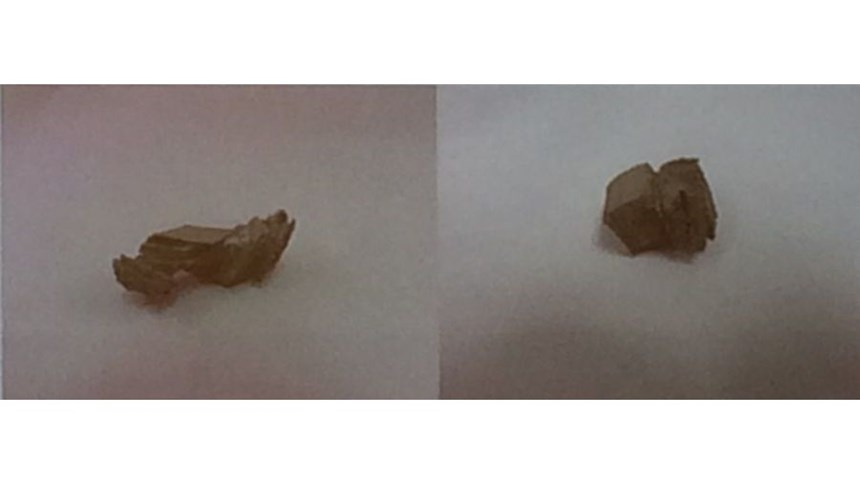AMUG Presents the Pains, Potential and Power of AM
The exhibits and presentations at AMUG 2016 afforded insights into where additive is, and where it is going.
As evidenced by many comments and conversations among the official 1,064 AM users at AMUG 2016 (the only people permitted to attend this unique annual meeting...with the exception of a few distinguished members of the trade press, including AM Magazine), the event was a success. So much so that the Group's treasurer's report is forecasting 35 percent growth for its 2017 event, tentatively planned for Orlando next April.
From updates on numerous metal and polymer AM technologies and perspectives on future trends to lively discussions about shared frustrations, challenges and common sense practices between users, I left this event with a renewed sense of excitement about the continued possibilities for AM in the industrial space.
Currently, the largest percentage of AM use still falls within prototyping, followed by tooling then production, according to representatives from 3D Systems, Carbon, Concept Laser, ExOne, GE, SLM Solutions and Stratasys during a morning panel discussion. However, the panelists noted that there is a shift to production with the lowest hanging fruit being tooling, primarily for composites, and cores and cavities. Tooling offers the best value proposition as it presents less risk than printing a part and having to start over due to a failure. Tooling is a market penetration strategy as it helps shops look at AM as an add-on to their capabilities, as opposed to a threat. Other low-hanging fruit includes conformal cooling, urethane casting (eliminate casting and just printing the urethane parts), replacement parts, and jigs and fixtures. The overall key is to find something in your own company that can benefit from AM.
Challenges to full AM adoption include a cultural resistance to change, establishing a compelling business case for AM investment, gaining C-level (top-down and ground up) support, creating an AM corporate strategy, engaging companies earlier, developing AM standards and incorporating design for AM (DFAM).
Many in attendance claim DFAM is the biggest hurdle to full AM adoption and are asking for design guides from system OEMs. However, many machine and software developers say the inherent variables, such as application, volume, part size and material, are a major limitation. There is not "one" solution. Despite this thinking, users are still looking for OEMs to take bold risks when it comes to materials, machines and software development.
Two main limitations to AM efficiency lie in materials and speed. When it comes to materials, some event participants believe that industry needs to have an open source platform, an “App Store” for resins that gives users access to all material parameters. Basically, creating a dynamic marketplace with materials suppliers, chemists, etc. that would drive the price down as use scales up.
One recurring theme throughout the event was data-centric printing and the use of in-situ monitoring to make data available immediately after a build, so it can be analyzed and used to improve processes, hence improving parts. Other general areas of interest included workflow, simulation, system architecture and factory integration.
Despite all the AM excitement and growth, this technology is not immune to the current and next generation workforce challenges. Companies investing in and implementing AM are discovering they need to train their own. Taking the best and brightest in their engineering departments and on their shop floors and allowing them to fail with the technology to achieve success and innovation. Innovation is all about getting out of your comfort zone. With that being said, however, academia, OEMs and groups like AMUG are working together to help improve AM education on several levels, so companies can build their own AM dream teams with a diverse set of skills, including 3D printing/prototyping, CAD/CAM, metallurgy, crystallography, CNC programming, mechanical design, lean manufacturing, machining, equipment repair, IT/programming, operations and welding.
Read Next
Crushable Lattices: The Lightweight Structures That Will Protect an Interplanetary Payload
NASA uses laser powder bed fusion plus chemical etching to create the lattice forms engineered to keep Mars rocks safe during a crash landing on Earth.
Read MorePostprocessing Steps and Costs for Metal 3D Printing
When your metal part is done 3D printing, you just pull it out of the machine and start using it, right? Not exactly.
Read MoreBike Manufacturer Uses Additive Manufacturing to Create Lighter, More Complex, Customized Parts
Titanium bike frame manufacturer Hanglun Technology mixes precision casting with 3D printing to create bikes that offer increased speed and reduced turbulence during long-distance rides, offering a smoother, faster and more efficient cycling experience.
Read More



































